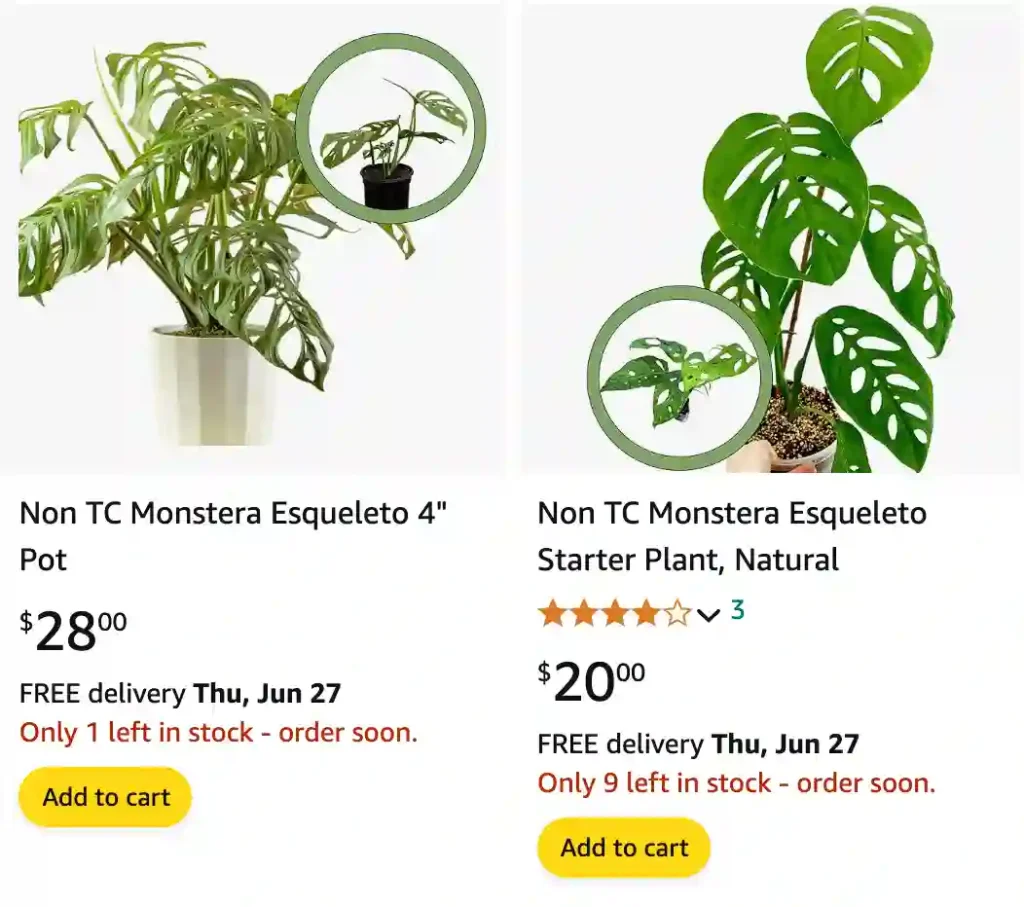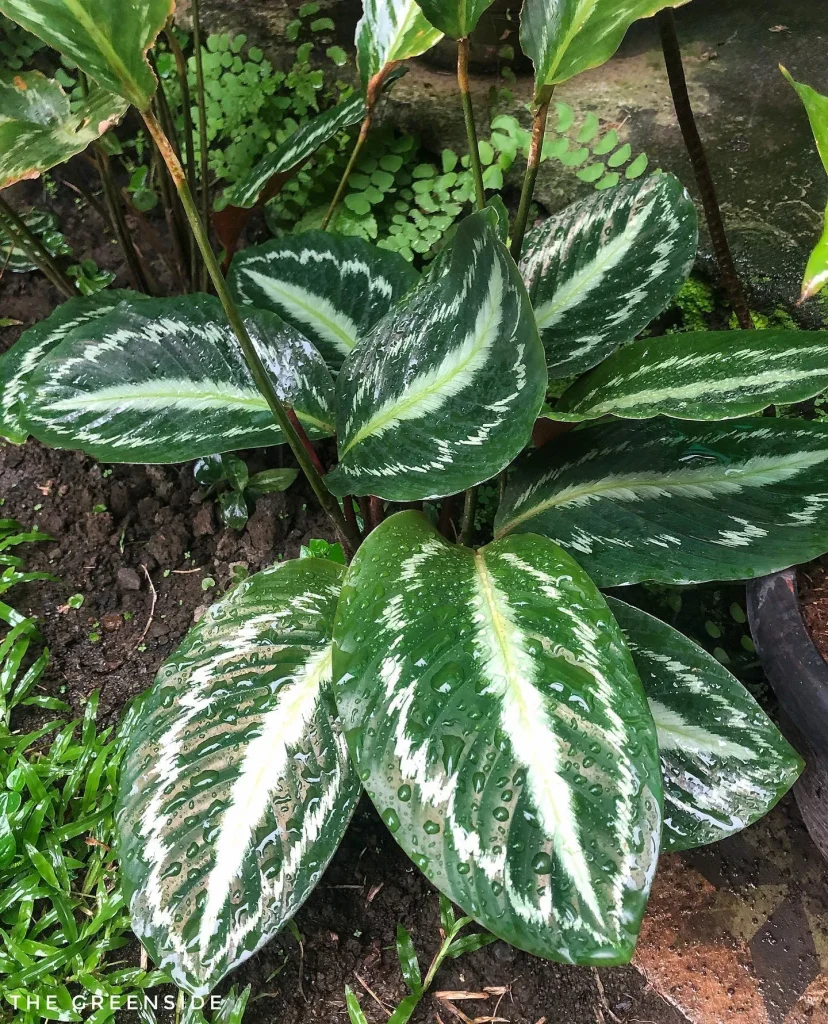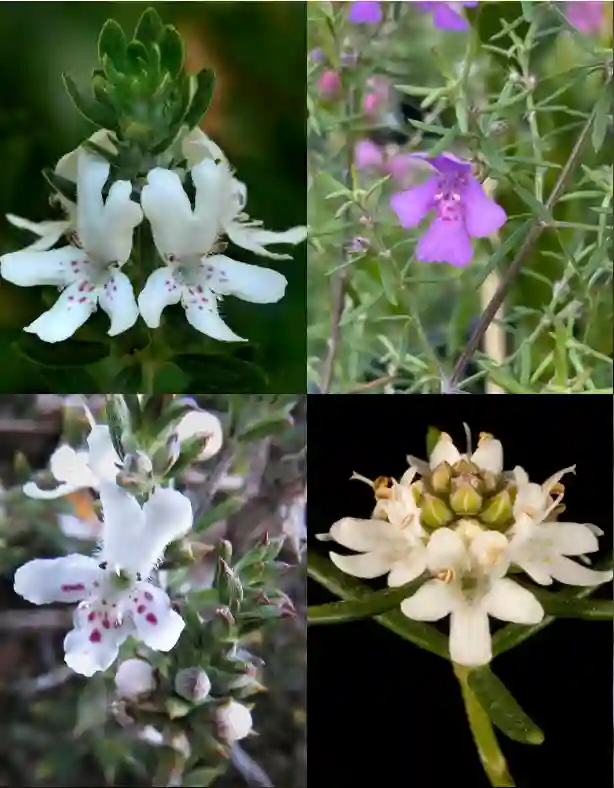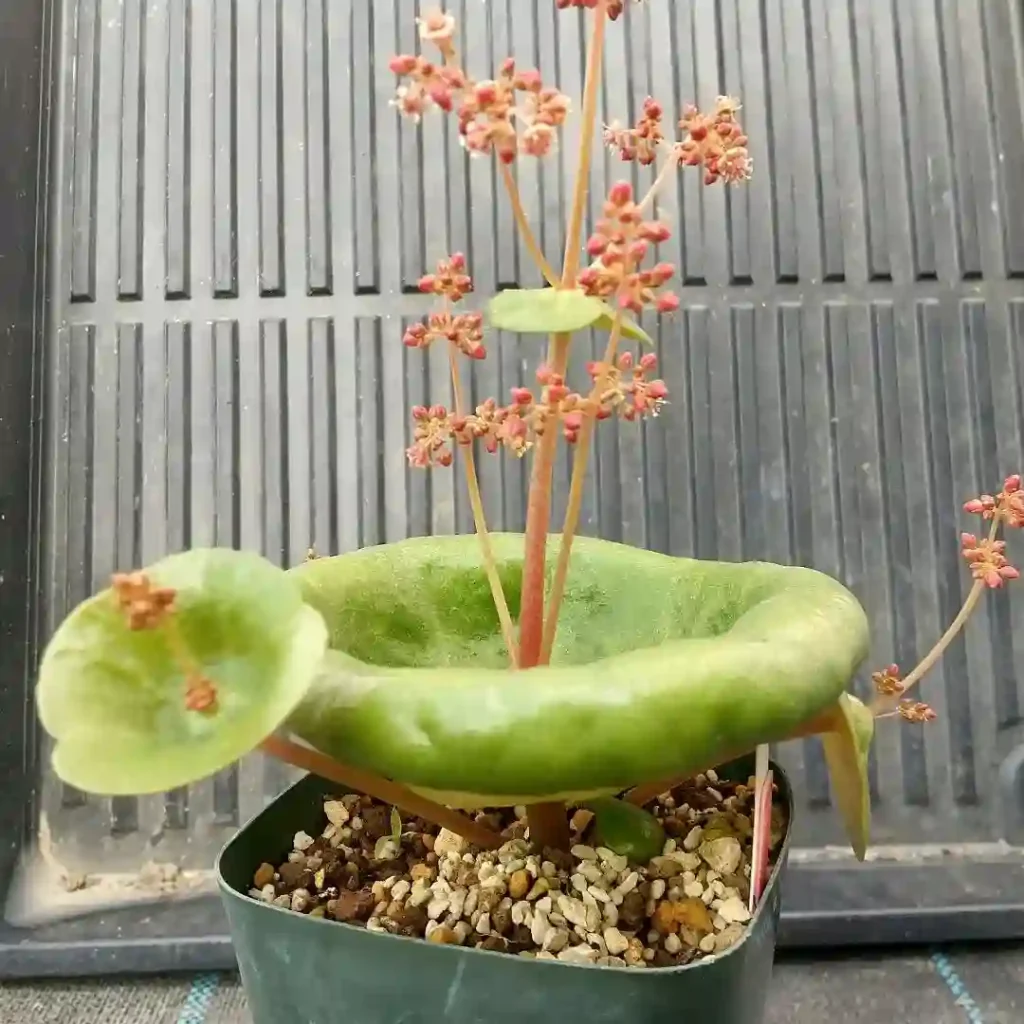
1. Introduction: Unveiling the Mystique of the Monstera Esqueleto
The Monstera Esqueleto is a highly sought-after tropical aroid, renowned for its uniquely dramatic and deeply fenestrated leaves. Its name, “Esqueleto,” meaning “skeleton” in Spanish, perfectly captures the open, bone-like appearance of its mature foliage. These impressive leaves can grow over 36 inches or even 2-4 feet long, featuring intricate and deep perforations.
Botanically, the Monstera Esqueleto has often been referred to as Monstera epipremnoides. However, an important botanical distinction to note is that the plant commonly cultivated as ‘Esqueleto’ was once thought to be Monstera epipremnoides, but recent research has identified it as a cultivar of an undescribed species, more closely related to Monstera lechleriana. This clarification not only enhances factual accuracy but also helps readers understand the plant’s true origins, while accurately optimizing search visibility for both “Monstera Esqueleto” and “Monstera epipremnoides.”
Originating from the lush tropical forests of Central and South America, the Monstera Esqueleto is often described as the “bigger brother” to Monstera adansonii, boasting significantly larger and more complex fenestrations (2-4 ft leaves compared to adansonii‘s 8-12 inches at maturity). While its fenestrations are more pronounced than adansonii, they are less extreme than the extremely rare Monstera Obliqua species. This comparison helps prospective buyers visualize the leaf size and shape while also assisting those searching for different Monstera varieties to discover information about the Esqueleto, broadening the article’s reach.
Beyond its striking beauty, the Monstera Esqueleto offers a unique blend of aesthetic appeal, relatively low maintenance, and functional benefits. It creates a dramatic focal point in any indoor space and has the capacity to improve indoor air quality through natural filtration. For many, it’s more than just a plant; it’s a symbol of growth, balance, and the wondrous outcomes patience can yield.
2. Mastering Optimal Growing Conditions for Your Monstera Esqueleto
To ensure your Monstera Esqueleto thrives and displays its distinctive beauty, providing ideal environmental conditions is paramount.
| Problem | Symptoms | Root Cause | Solution |
|---|---|---|---|
| Overwatering | Yellow leaves, mushy stem base, black leaves, root rot | Constantly wet soil, poor drainage | Allow soil to dry completely; reduce watering frequency; ensure good drainage |
| Underwatering | Wilting, dry and crispy leaves, brown tips, curled leaves | Lack of water, soil too dry for too long | Increase watering frequency; ensure consistent moisture without waterlogging |
| Pest Infestation | Presence of spider mites or mealybugs, sticky residue, yellow or brown spots | Common houseplant pests | Treat with eco-friendly insecticidal soap; maintain proper humidity; inspect regularly |
| Light Issues | Leggy growth, muted leaf patterns, no fenestrations, black leaves (direct sun), yellow leaves (too little light) | Insufficient or excessive light | Relocate to bright, indirect light; supplement with grow lights; use sheer curtains |
| Nutrient Deficiency | Discolored leaves, stunted growth, yellowing foliage | Lack of fertilizer or soil nutrients | Supplement with balanced fertilizer; follow recommended dosage |
| Lack of Fenestrations | Leaves not splitting or developing holes | Immature plant; insufficient light levels; underwatering | |
| Brown Leaf Tips/Edges | Crispy, brown edges or tips on leaves | Low humidity; excessive soil dryness; inconsistent watering; overwatering (less common) | |
| Yellow Spots | Mottled yellow spots on leaves, sometimes with a circular brown center | Improper watering; disease or pests | |
| Black Leaves | Leaves turning black | Exposure to direct sun; root rot (from overwatering) | |
| Curled Leaves | Leaves curling inwards or downwards | Improper watering; lack of humidity; heat stress; pests |
This table is an invaluable resource for plant caregivers, offering quick, easy diagnosis and solutions. It not only enhances the user experience by providing accessible information but also optimizes content for search queries related to plant problems, boosting visibility in search engines.
Light Requirements: The Secret to Lush, Fenestrated Leaves
The Monstera Esqueleto thrives best in bright, indirect light. Direct sunlight can scorch or burn its delicate leaves. Conversely, low light conditions will result in leggy growth, diminished leaf patterns, and, crucially, a lack or loss of its signature fenestrations.
To optimize light, position your plant near a window with filtered light, or use sheer curtains to diffuse intense rays. An ideal spot is typically 3 to 4 feet from an unobstructed east or west-facing window. For spaces lacking natural light, the Monstera Esqueleto also performs well under artificial grow lights. Unsplit leaves or faded fenestrations are a clear indicator that your plant isn’t receiving enough light. This underscores that light is not just essential for survival but is a critical determinant of the plant’s unique aesthetic characteristics, allowing caregivers to easily identify and adjust conditions promptly.
Watering Wisdom: Avoiding Root Rot and Wilting
Maintaining a consistent watering schedule is crucial for your Monstera Esqueleto. The plant should be thoroughly watered when the top inch, few inches, or 2-3 inches of the soil feel dry to the touch.
Monstera Esqueleto is particularly susceptible to overwatering, which is a common cause of root rot. Always ensure that excess water drains freely from the pot to maintain balanced soil moisture. A general rule of thumb is that it’s better to underwater than overwater this Monstera. Insufficient watering can lead to wilting, dry, and crispy leaves. During winter months or in higher indoor humidity, reduce watering frequency. Root rot from overwatering is a common and serious issue, thus emphasizing the importance of good drainage and checking soil moisture before watering is key to keeping the plant healthy.
The Perfect Potting Mix: Ensuring Healthy Roots
A well-draining potting mix is essential for the Monstera Esqueleto. An ideal blend incorporates organic matter and materials like perlite or coarse sand to improve drainage and aeration for the roots. A mix of potting soil, perlite, and orchid bark also works very well. For those looking to create their own, a light, well-draining potting mix can be prepared by combining high-quality potting soil, perlite, and coco coir in a 2:1:1 ratio. Choosing the right soil acts as an effective preventative measure against root rot, the most common issue Monstera owners face, ensuring roots remain aerated and not waterlogged.
Temperature & Humidity: Recreating a Tropical Habitat
As a tropical plant, the Monstera Esqueleto thrives in warm environments. Maintaining indoor temperatures between 65°F and 85°F (18°C–29°C) is ideal. Avoid placing the plant in areas with sudden temperature fluctuations or drafts, which can stress the plant.
The Monstera Esqueleto prefers medium to high humidity, with levels above 60% being ideal for optimal growth. In drier indoor environments, consider using a pebble tray, a room humidifier, or grouping your Monstera Esqueleto with other houseplants to create a localized humid microclimate. Brown tips or curling leaves are often indicators of low humidity, showing that humidity not only affects optimal growth but also directly impacts leaf health and appearance.
Placement & Support: Encouraging Upward Growth
Place the plant in an area that receives consistent bright, indirect light, avoiding spots with drafts or sudden temperature changes. Ideal indoor locations include living rooms, offices, or any stable space that can maintain suitable conditions.
As a tropical climber, the Monstera Esqueleto benefits significantly from having a support structure like a wall, moss pole, or stake. Allowing the plant to grow vertically will help produce the largest leaves and fullest plant, encouraging robust growth and impressive, deep fenestrations. Providing support not only helps the plant stand upright but is also a crucial factor in helping the plant reach its full potential in terms of size and characteristic leaf shape, making it a valuable tip for those who want a truly impressive Monstera Esqueleto.
3. Essential Care Practices for a Thriving Monstera Esqueleto
Fertilization: Fueling Growth During Active Seasons
Fertilize your Monstera Esqueleto every 4–6 weeks during its active growing season (spring and summer). Use a balanced liquid houseplant fertilizer. Always dilute the fertilizer according to the package instructions to prevent over-fertilization, which can damage the plant’s roots. Cease fertilization in early autumn as temperatures begin to drop, as the plant’s growth will slow. Discolored leaves, especially yellowing, and stunted growth can be signs of nutrient deficiency. While water issues are often the primary cause of yellow leaves, nutrient deficiency is a secondary cause to consider if the problem persists after watering adjustments have been made.
Pruning & Cleaning: Maintaining Health and Aesthetics
Remove any yellow or damaged leaves using sharp, clean pruning shears. If leaves have significant black or brown spots, they should be removed as they cannot recover and can become a host for bacteria or mold. If only the tips or edges are brown, only the affected portion should be trimmed, attempting to maintain the leaf’s natural shape.
While pruning is generally not essential for this vining plant, new shoots can be pinched back to encourage the plant to branch out and become bushier, rather than focusing solely on a single main shoot. Regularly wipe down the leaves with a damp cloth to remove dust. This not only ensures maximum light absorption for photosynthesis but also helps reduce pest attraction. This simple action offers a dual benefit, improving both plant health and pest prevention.
Routine Maintenance: Staying Vigilant for Optimal Plant Health
Rotate your plant periodically to ensure even growth and consistent light exposure. Regularly inspect leaves and soil for early signs of pests or nutrient deficiencies.
4. Propagating Your Monstera Esqueleto: Expanding Your Green Collection
Propagation is an excellent way to create new plants from your existing Monstera Esqueleto or to utilize trimmings. Propagating from stem cuttings is relatively straightforward.
Step-by-step guide for successful stem cutting propagation:
- Select a Healthy Stem: Choose a healthy stem that has at least one node and one or two leaves. The node is the crucial part where new roots will emerge. Focusing on the node is key as it’s the biological hub for new root growth, turning a simple instruction into a mini-lesson in plant anatomy.
- Make the Cut: Using a sharp, sterilized knife or pruning shears, make a clean, smooth cut just below the node.
- Prepare the Cutting: Remove any leaves at the bottom near the node to prevent them from rotting when submerged in water or soil.
- Choose Your Propagation Medium:
- Water Propagation: Place the cutting in water, ensuring the node is fully submerged but the leaves remain above the waterline. Change the water regularly to keep it fresh.
- Soil or Sphagnum Moss: Alternatively, the cutting can be placed directly into a well-draining potting mix or sphagnum moss/stratum.
- Provide Optimal Conditions: Place the cutting in a warm, bright spot with indirect light. Maintaining high humidity will encourage root development.
- Potting Up: Once the cutting develops a robust root system—typically after 4-6 weeks or when roots are 2-4 inches long—it’s ready to be transplanted into a pot with a suitable potting mix. Keep the soil consistently moist during the first week after transplanting to help the roots acclimate.
5. Repotting Your Monstera Esqueleto: Signs, Timing, and Techniques
When to Repot: Recognizing Root-Bound Signs
The Monstera Esqueleto generally needs repotting every one to two years or every one to three years. Younger plants might require annual repotting, while more mature plants may only need it every other year, depending on their growth rate.
Key signs that your plant needs repotting:
- Roots growing out of the drainage holes or coiling around the inside of the pot.
- Stunted growth, even though the plant has the potential for rapid growth.
- Yellowing leaves, which can be a sign that roots are tightly bound and struggling to absorb water and nutrients.
- Degraded soil quality, causing the potting mix to dry out faster than usual.
- Cracks in the pot, indicating that the roots have outgrown their space and are exerting pressure.
- Dark, foul-smelling soil, a potential sign of root rot.
Best Time and Frequency for Repotting
The optimal time to repot your Monstera Esqueleto is in early spring. During this period, warming weather makes the plant more adaptable to change, promoting faster recovery and healthy new growth. While spring and summer are ideal, repotting can still be successfully done in any month of the year if necessary. However, it’s best to avoid repotting in winter, as the plant is typically in a dormant phase and less likely to recover quickly from disturbance. This strategic timing minimizes stress on the plant and encourages robust post-repotting growth.
Choosing the Right Pot and Potting Mix
- Pot Size: Select a new pot that is only two to four inches larger in diameter than the old one.
- Avoid Oversized Pots: It’s crucial to avoid using an overly large pot, as it will retain too much moisture, potentially leading to fungal growth and root rot. This directly links pot size choice to the common root rot issue, emphasizing the importance of maintaining balanced soil moisture.
- Pot Material: Terracotta pots are highly recommended for Monsteras as they help prevent root rot by allowing the soil to dry out more efficiently.
- Soil: Use a light, well-draining potting mix, similar to the recommendations for initial planting.
Step-by-Step Repotting Process
- Prepare Your Tools: Before you begin, gather gardening gloves, your new terracotta pot (at least one size larger), fresh potting mix, sharp pruning shears (optional, for root trimming), old newspaper or a plastic sheet to protect your workspace, and a watering can.
- Remove the Monstera from its Pot: Spread out your newspaper or plastic sheet. Gently tilt the plant to one side and carefully pull it out of its old pot. If it’s stuck, you can use a knife to loosen the soil around the edges while holding the plant stem at its base.
- Loosen Roots and Remove Old Soil: Once the plant is out of the pot, inspect the root ball. If the roots are coiled and tight, it’s a clear sign of being root-bound. Gently shake the root ball to loosen the roots and use your fingers to remove some of the old soil. Use sterilized, sharp pruning shears to cut away any damaged, mushy, or dark roots; this helps prevent cross-contamination and the spread of disease.
- Prepare the New Pot: Fill approximately half of the new pot with fresh potting mix.
- Repot the Monstera: With one hand supporting the loosened root ball and the other holding the plant’s stem near the base, carefully center the plant in its new pot. Fill in the gaps with more soil until the plant is secure, gently patting down the top layer of soil to remove air pockets. Leave about an inch of space from the pot’s rim.
- Water Thoroughly: Water your newly repotted Monstera thoroughly. This helps settle the soil, eliminate any remaining air pockets, and provides essential moisture for the roots to adjust.
- Return Plant to Original Spot (and Aftercare): Place the plant back in its original location to prevent transplant shock, as sudden changes can stress the Monstera. Maintain a consistent watering schedule and closely monitor the plant for any signs of stress. It’s crucial not to fertilize the Monstera for the first six to eight weeks after repotting to protect the delicate young roots as they adjust.
6. Troubleshooting Common Monstera Esqueleto Problems
Many common difficulties with Monstera Esqueleto arise from minor imbalances in watering, light, or nutrients, and can often be easily remedied. The first signs of poor health often manifest in the leaves. Recognizing that many plant problems often stem from improper watering or lighting is a critical starting point for diagnosis and remediation. This helps caregivers focus on the most fundamental factors when the plant shows unusual signs.
7. Monstera Esqueleto Toxicity: An Important Safety Note
Understanding Risks to Humans and Pets
While beautiful, it’s important to note that Monstera plants, including the Monstera Esqueleto, are mildly toxic to humans and poisonous to cats and dogs, though generally not fatal. They can, however, cause significant discomfort.
The Toxin: The plant’s toxicity stems from insoluble calcium oxalate crystals found in its sap. Knowing this specific toxin helps readers understand the mechanism of harm and increases the credibility of the information.
Harmful Parts: All parts of the plant are harmful if ingested, with the exception of the fully ripened fruit, which rarely develops on indoor Monsteras. Even small amounts can cause symptoms, particularly in sensitive pets like cats. Monstera is also harmful to most other animals if ingested, including birds, rabbits, hamsters, ferrets, rodents, and reptiles. Contact with the sap can also cause discomfort or skin irritation for sensitive individuals.
Recognizing Symptoms of Ingestion
Symptoms of Monstera poisoning in both humans and animals can include: oral irritation, pain and swelling of the mouth, tongue, or lips, excessive drooling, vomiting, difficulty swallowing, and a general loss of appetite.
Prevention and Emergency Contacts
Prevention is Key: The best defense against Monstera poisoning is preventing ingestion. When bringing a Monstera Esqueleto into your home, carefully choose a location that is out of reach for children and pets. This might include placing the plant on high shelves or using physical barriers like other furniture. It’s also wise to closely supervise children and pets when they are near the plant.
Emergency Contacts: If you, your child, or your pet experiences any symptoms and you suspect Monstera poisoning, contact a medical professional or veterinarian immediately. For specific pet concerns, the Pet Poison Hotline is available 24/7 at (855) 764-7661.
8. Conclusion: Enjoying the Unique Beauty of Your Monstera Esqueleto
The Monstera Esqueleto offers a unique blend of aesthetic appeal, relatively low maintenance, and functional benefits, making it a valuable addition to any indoor space. By adhering to the care tips outlined, including ensuring bright, indirect light, maintaining proper watering practices, and utilizing a well-draining potting mix, caregivers can foster healthy growth and preserve the distinctive, highly sought-after “skeleton” leaf structure of this rare and beautiful houseplant. With the right care, your Monstera Esqueleto will continue to be a stunning focal point and a source of joy for any plant enthusiast.
If i die, water my plants!



